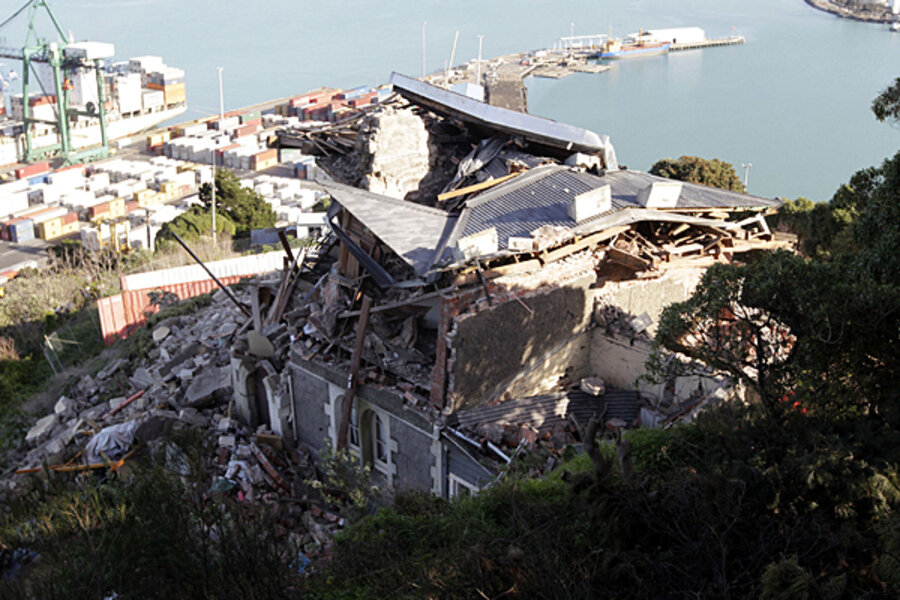New Zealand earthquake rocks Christchurch rebuilding hopes
Loading...
| Wellington, New Zealand
New Zealand's second-largest city was rocked by a fresh earthquake this week even as it struggles to rebuild and bring a measure of closure to tragedy following two devastating earthquakes nearly four months ago.
Shortly after an inquest into the deaths of Christchurch earthquake victims broke for lunch Monday, the Riccarton Function Centre, where families of the 181 victims waited for answers about the collapse of an office building on Feb. 22, was shaken by a 5.5-magnitude earthquake.
The court resumed at 2:15 p.m., only to be hastily reevacuated five minutes later when a significantly more powerful 6.0 temblor rocked the city again.
With that hearing now indefinitely postponed, it has been left to the residents of the formerly picturesque Christchurch – along with increasingly pressured leaders here in the political capital, Wellington – to ponder how to rebuild life.
Severe tremors are common in geologically young New Zealand, a land sometimes referred to as "the shaky isles" for its prime position on the Pacific Rim's "Ring of Fire" – a series of seismically active fault zones. But the duration of the recent activity, which began last September, is unprecedented in the country’s 171-year history.
Though 15,000 homes reportedly lost power, and many more were without water, so far no one is reported to have died in this week’s tremors. But another 75 buildings in central Christchurch are now marked for demolition – joining more than 1,000 nonresidential structures “red-flagged” in the wake of the Feb. 22 quake – and swaths of the eastern suburbs have been reclogged by liquefaction.
One of the people overseeing the recovery effort, Roger Sutton, has said thousands of homes may also now have to be demolished as part of the final rebuilding effort.
Prime Minister John Key, who was raised in Christchurch, today also hinted that parts of the city might now be permanently abandoned, the details of which would be announced after the government has been fully briefed by insurers – and their reinsurers – and an official earthquake commission.
"The people of Christchurch should know that all New Zealanders are thinking of them and will continue to support and stand by them at this very difficult time,” the premier told reporters.
Another three tremors were felt in the city on Wednesday.
Speaking on national television, Mayor Bob Parker vowed that the effort would continue. Meanwhile, however, many of the messages on the same network’s website seemed to suggest others were taking a gloomier view.
Even the prospect of a mini-boom in building work would probably not convince construction workers to stick around, says Chris Rogers, a laborer. The urban center he once called home “is starting to feel a bit like being on death row,” he says. Still, the number of residents permanently decamping from the city to date remains small.





